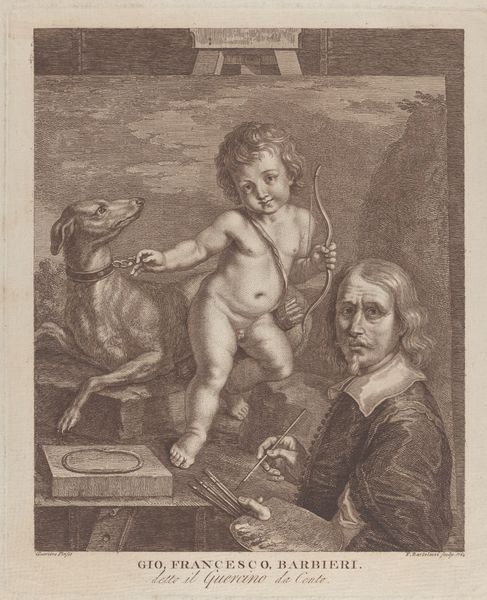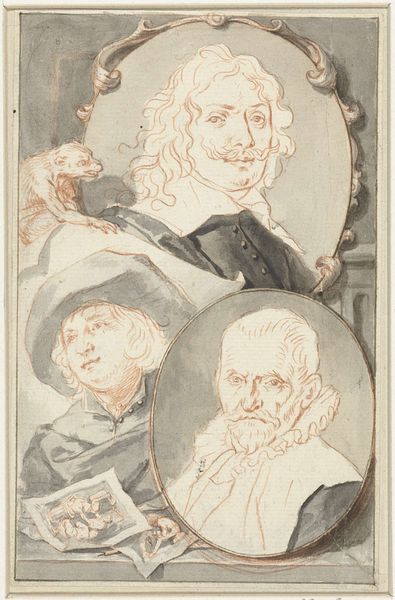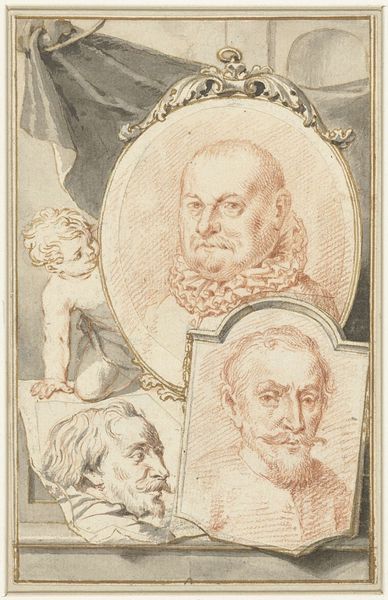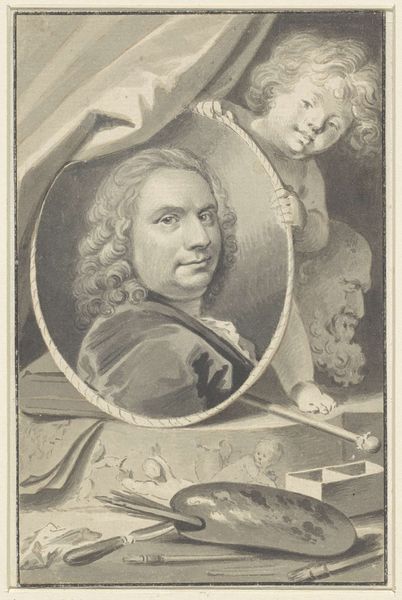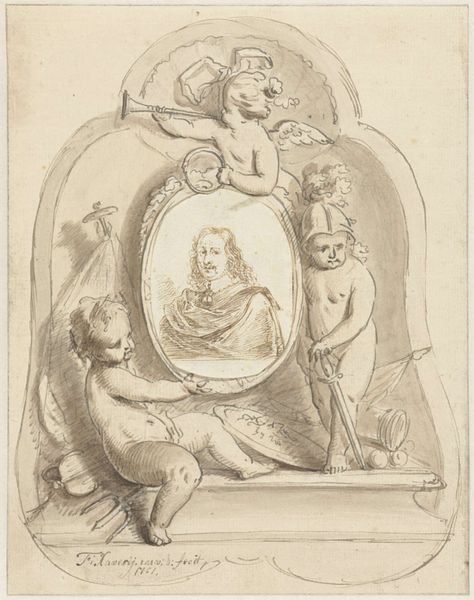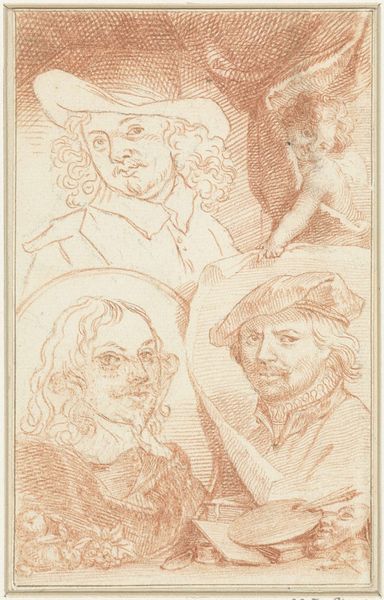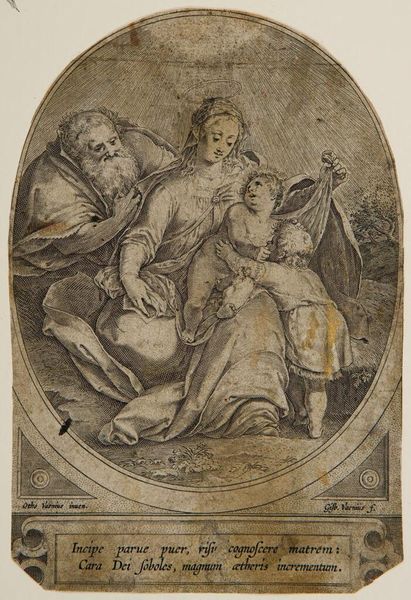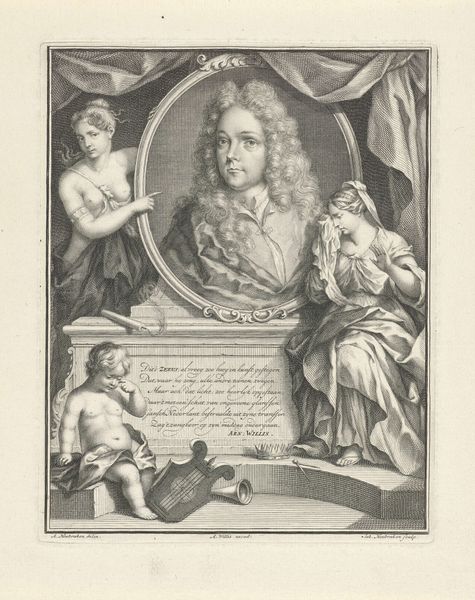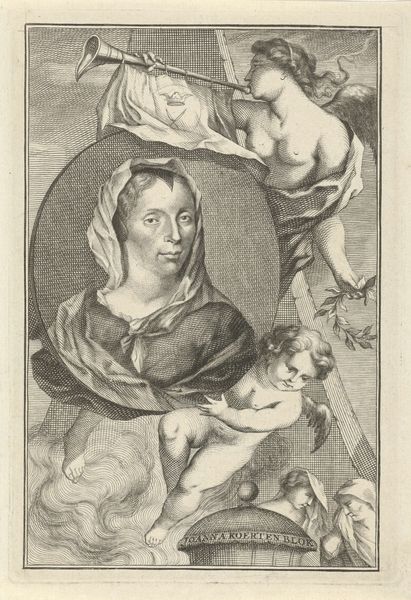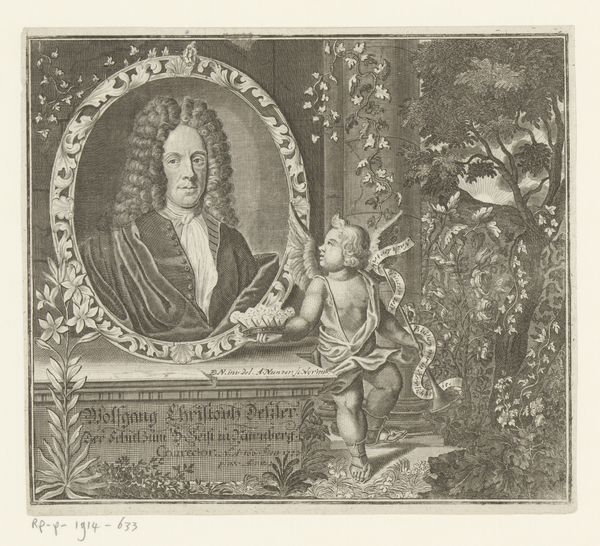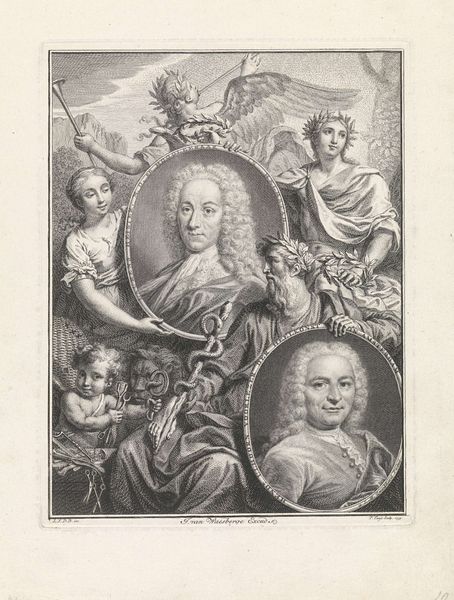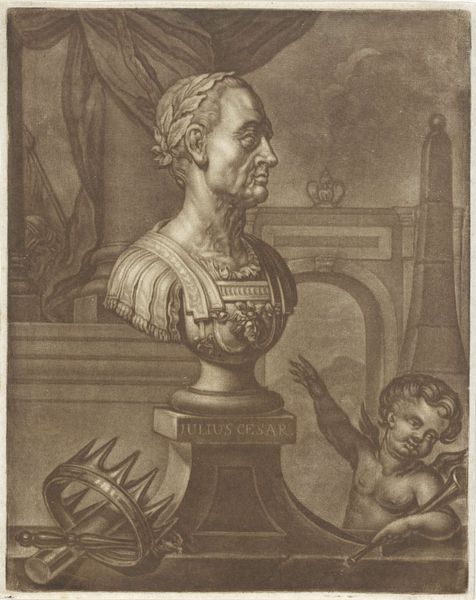
drawing, paper, ink, pen
#
portrait
#
drawing
#
charcoal drawing
#
paper
#
11_renaissance
#
ink
#
pen
Dimensions: height 152 mm, width 99 mm
Copyright: Rijks Museum: Open Domain
Curator: Here we have “Portretten van Anton van Dyck en Jacob de Bray,” created between 1708 and 1780 by Jacob Houbraken. It’s currently held in the Rijksmuseum’s collection. Editor: My initial impression is one of delicate monumentality. The subtle tonal gradations achieved through pen, ink and charcoal drawing on paper gives it this quiet authority. The use of line is masterful! Curator: Yes, and considering Houbraken's known work as an engraver, we see that skill informing this piece. Notice how the circular frames mimic the look of engraved portrait medallions. And observe how Anton van Dyck is positioned above Jacob de Bray, almost like a master and student. This hierarchical positioning of portraits was not unusual during the Renaissance, right? Editor: Absolutely, it visually represents influence and legacy, perhaps Houbraken is reminding us of the networks of artistic production, that nothing emerges from nothing, art-making builds on and even defers to its precursors, always. Do you see how the Cupid figure, not strictly related to the portraits, further elevates this piece into an allegory? It speaks to the enduring fame artists hope to achieve. The choice of pen and ink are interesting from a purely technical view— such permanence, like the fame these figures crave. Curator: It seems that Cupid acts as an immortal witness. He connects their earthly talent to some kind of higher inspiration. This element of timelessness really speaks to the human desire for remembrance. What do you make of the fruit arrangement in the lower portion? It feels very still life oriented amidst all the other elements. Editor: Well, the still life serves several functions I believe. Materially, fruit presents itself in a spectrum of colors, which shows the artist's capabilities. Symbolically, however, fruit conveys bounty and fertility. And decaying fruit is always a warning about mortality; and I would consider the materiality of paper, pen, and ink—as a tool to halt the effect of time. Curator: True. The drawing becomes a stand-in for life, holding onto the artists' visages long after they’re gone. And like them, its cultural significance can change shape. I see those tonal nuances suggesting a certain vulnerability as if even in portrayal, no one escapes the mark of time. Editor: This piece definitely reflects the Renaissance spirit, capturing both individual brilliance and collective aspiration, all through such economic choices of medium. Curator: Indeed, reflecting both the individual subject's talents and society's regard.
Comments
No comments
Be the first to comment and join the conversation on the ultimate creative platform.
